 Image: Nexar
Image: Nexar
 At a Glance
At a Glance
Expert’s Rating
Pros
Excellent 1080p, 135-degree capturesEasy setup and connection via the phone appUnlimited free cloud uploads from your phoneRemovable microSD card storage (unlike Owl)
Cons
Camera relies on the phone for GPS info, including date/time
Our Verdict
The Nexar Beam leverages your phone to the max, and the company provides free, unlimited uploads to its cloud service. You need the phone for GPS, and all the goodies, but it’s a great product within those boundaries.
Best Prices Today: Nexar Beam Dash Cam
RetailerPrice
The Nexar Beam isn’t the first dash cam to upload video to the cloud—that honor goes to the Owlcam—but it’s nearly as elegant as the Owl, and far more affordable at $90 from Amazon. Free unlimited cloud uploads, GPS, and traffic and accident warnings are the highlights, but both day and night captures are excellent as well.
Note that without the phone, GPS and other goodies disappear (video is still captured). In a phone-centric world, that’s not a huge concern for most users.
This review is part of our ongoing roundup of the best dash cams. Go there for information on competing products and how we tested them.
Design and features
The Beam is a diminutive, square black box of a camera. It’s as small as the Garmin Dash Cam 66W we reviewed last year (currently $200 on Amazon), but it lacks a display (that’s provided by your phone), and the lens housing protrudes further. The sensor is a 1080p GalaxyCore GC2053, a model and brand I’ve never experienced before. Recognizable or not, it does the job. Note that the G-sensor is in the camera, not in the phone.
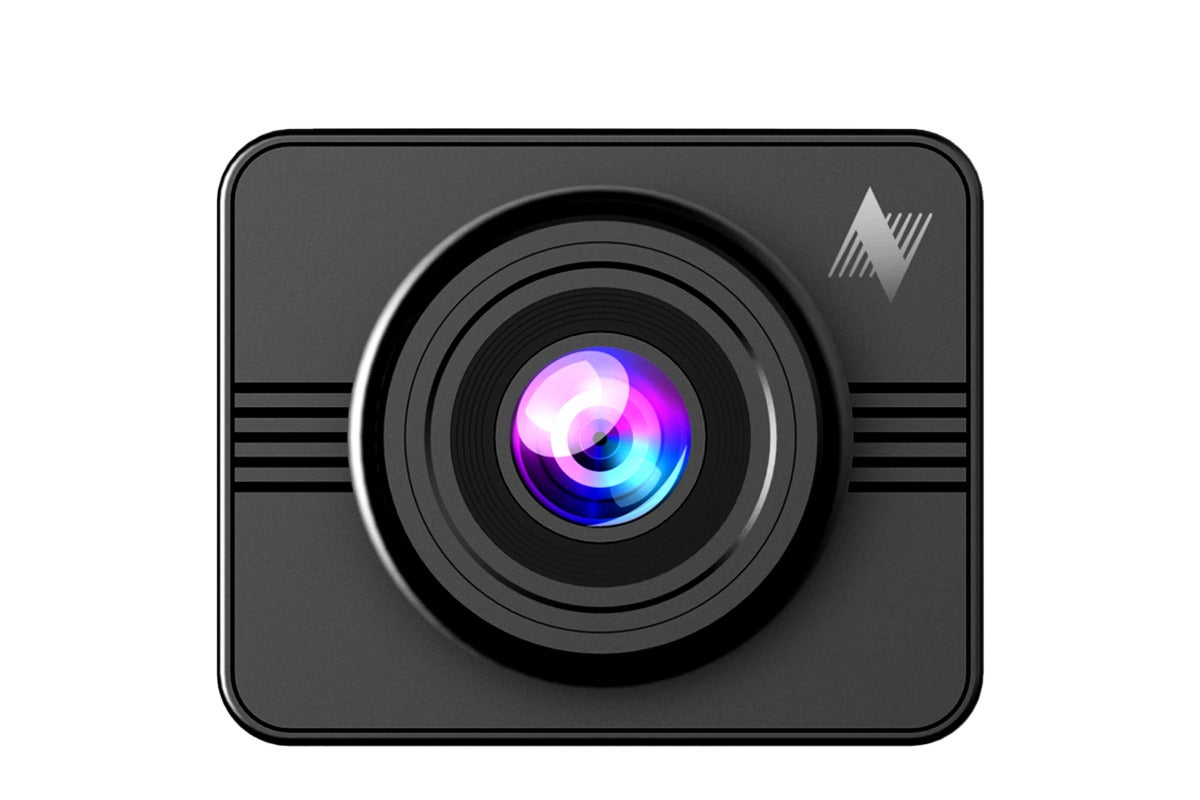 Nexar
NexarNexar’s Beam is diminutive, simple, and unobtrusive. Ignore the color treatment in the lens above—it’s not that color naturally.
On the left side of the camera are the power button and micro-SD card slot, while the right is given over to perforations for ventilating the unit. On top are the slot where the suction mount marries to the body, and the mini-USB jack. That’s it. Simple, clean, and easy. If the goal is to be unobtrusive (which to avoid theft, it should be), the Nexar achieves that. Everything else is provided by or done on your phone (iOS or Android).
App and connectivity
Nexar has done a nice job on the phone app. It’s stupid-easy to connect the camera to the phone, and the interface is clean, well-organized, intuitive and informative. Of course, you’ll need to create an account for the phone so you can upload videos, etc.
When you’re finished and have uploaded some “rides” (videos), you can check them out at the online portal dashboard.getnexar.com. I didn’t link as you won’t have access unless you buy. Sign-in is easy, as an access code is sent to your phone.
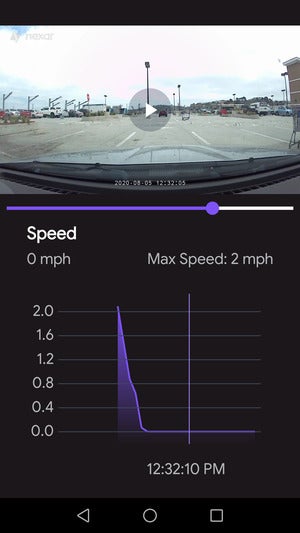 IDG
IDGThis is the drive playback info page. At this point I had parked on top of my local Lowe’s after hitting the freeway here in San Francisco.
The camera records to the micro SD card, then transfers to the phone as time allows (it’s near-real-time), then gives you the opportunity to save them to the cloud. You can limit the Beam’s use of phone storage to 20-, 50-, or 80 percent of what’s available; once it hits that limit, it will overwrite previous videos. There’s also automatic upload triggered by the G-sensor, as with the Owl. It worked perfectly in my exclusive, proprietary bang-the-dash-cam-on-the-desk tests, and it didn’t trigger falsely while on the road.
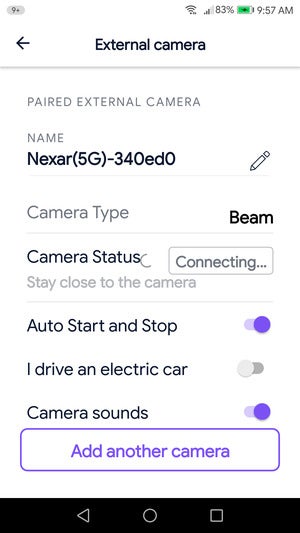 IDG
IDGNexar has spent a great deal of time honing the options for a smooth experience.
You can also wrap the video with all the important data into a report and upload it immediately using a one-click report function. Siri voice command may be used if you have an iPhone, and the Nexar Groups app allows you to check up on the kids, or vice versa–you know, see if they are where they say they are. I tested the Android version, which lacks the voice command and groups at the moment.
Capture quality
The Beam takes excellent 1080p, 30-fps video. I was especially impressed with the motion stabilization. Even over the rough local roads and the occasional speed bump, the video remains fixed on the horizon with no tearing or jumps.
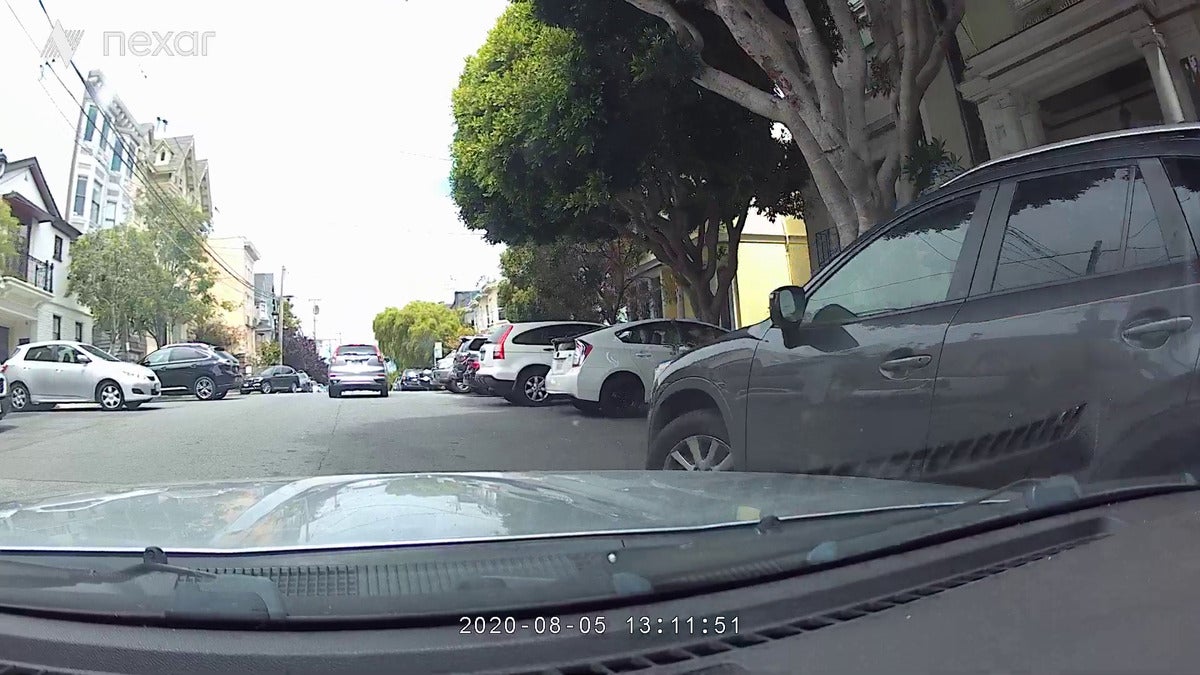 IDG
IDGThough the colors may not seem very saturated, they are partly diminished by the overcast skies here in a dreary San Francisco summer. If it weren’t August, I’d call it the June Gloom.
The colors are quite accurate, details are identifiable, and in general the image quality is about as good as you’ll see with 1080p. If you’re documenting travels, you might opt for a dash cam with higher resolution, but you won’t find anything better for everyday use.
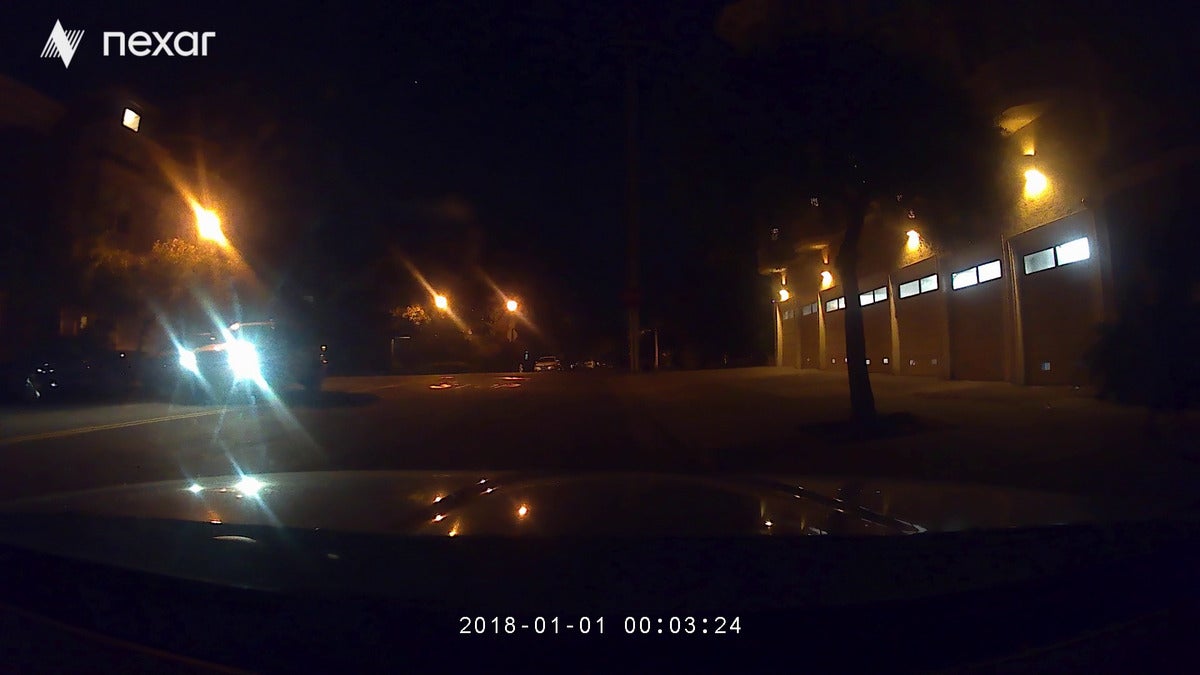 IDG
IDGThis capture suffers some flare in the lighting, but a great deal of it was my schmutz on my windshield. Notice the date and time. This is what happens when you don’t connect to the phone and Beam battery runs down over a few days.
Note that the night captures have the orange-ish tinge featured by many sensors, but they still reveal quite a lot of detail. Headlight flare is minimal. Some of flare in the image above is due my less-than-stellar cleaning of my windshield. My bad.
It’s also my fault that the screenshot shows a 2018 date. The Beam had been disconnected for a week, the battery drained, and I didn’t have my phone with me to reset the camera. Speaking of which, the Beam will run for approximately 15 seconds after the power is removed, assuring that post-incident events are captured.
I was a bit worried about battery life on my phone with the Nexar app running. When connected to the dash cam and in use, the app’s obviously going to use some juice, so keep the phone charging if you’re on a long trip. The auxiliary power connector with dual USB ports that Nexar includes helps with that. That said, the drain wasn’t as significant as I was expecting, and the Nexar app didn’t seem to affect battery life at all when not in operation.
Excellent with the phone
When used in conjunction with your phone, the Nexar Beam delivers an excellent dash cam experience. Super-easy and slickly designed. For people who wouldn’t be caught dead without their phone, and only need front coverage, it’s fantastic.
If you need cabin coverage, the front/interior Nexar Pro is $130 on AmazonRemove non-product link with the same cloud features.
Best Prices Today: Nexar Beam Dash Cam
RetailerPrice


